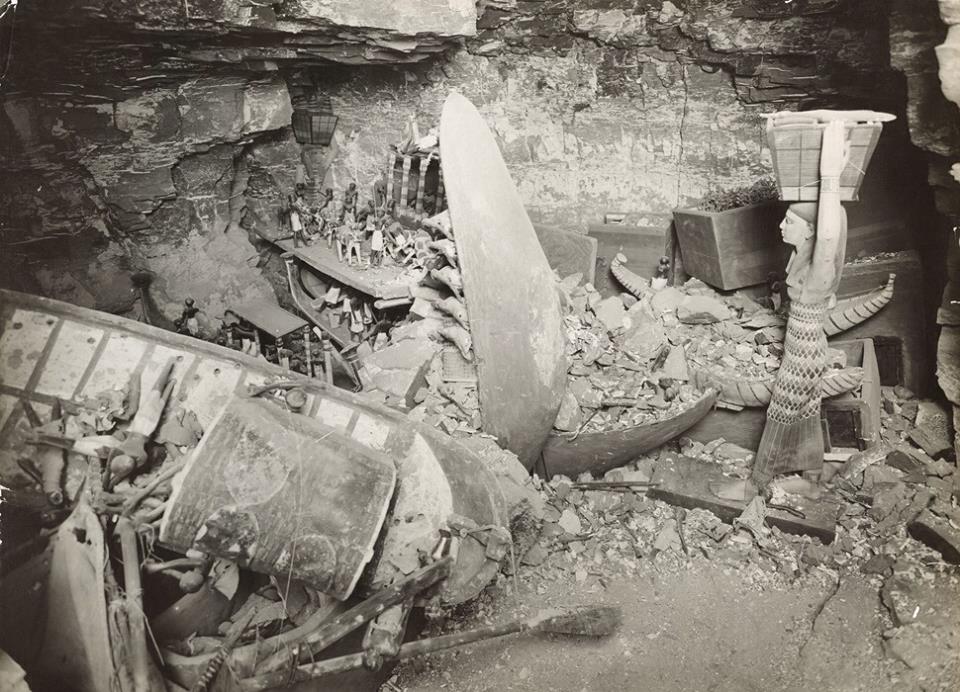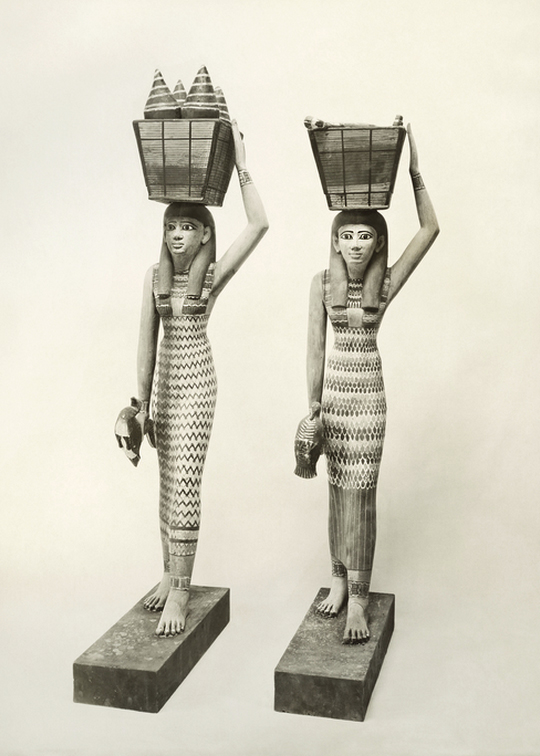
Offering Bearer
Dynasty 12, early reign of Amenemhat I (ca 1981–1975 BCE)
Painted Wood, H. 112 cm (44 1/8 in); w. 16.5 cm (6 1/2 in); d. 46.5 cm (18 5/16 in)
Western Thebes, tomb of Meketre
Rogers Fund and Edward S. Harkness Gift, 1920 (20.3.7)

Offering Bearer
Dynasty 12, early reign of Amenemhat I (ca 1981–1975 BCE)
Painted Wood, H. 112 cm (44 1/8 in); w. 16.5 cm (6 1/2 in); d. 46.5 cm (18 5/16 in)
Western Thebes, tomb of Meketre
Rogers Fund and Edward S. Harkness Gift, 1920 (20.3.7)
| (from museum website): "This tall, slender woman, like the model of a riverboat (Highlight #10), was discovered in a hidden chamber in the tomb of Meketre."
(from museum website): |
 Hidden chamber before clearance, March 18, 1920 Harry Burton (English, 1879–1940) The Egyptian Expedition of The Metropolitan Museum of Art Gelatin silver print, (MC 35) |
|
(from museum website): "Of the thirteen models and figures received by the Museum in the division of finds from the tomb, this offering bearer is the finest work of art. Looking at this graceful figure, you can see the difference between a work made in wood and one of stone. Similar conventions guide the artist, but the more flexible and forgiving medium of wood allows the sculptor to free the entire body, including the limbs, and to create what is truly a piece of sculpture in the round. "The woman personifies an estate that would have provided food offerings for Meketre's spirit in perpetuity. She holds a live duck by its wings in one hand and balances a basket of food—primarily cuts of meat—with her other. Her dress is decorated with the feather pattern often associated with goddesses, and this may refer to Isis and Nephthis, who protected the spirit of the deceased in the afterlife. Because the act of offering has great significance and involves motion, female offering bearers are often shown in the striding pose usually reserved for male figures in Egyptian art. A statue similar to this one, but carrying bread and beer in her basket, is in the Egyptian Museum, Cairo. (I located a color photo of it online) "When they were uncovered in 1920, the models of Meketre were the most detailed, best preserved, and most diverse set of wooden funerary models ever found. The same can be said of them today." |

Pair of offering bearers from the tomb, front view, 1920 Harry Burton (English, 1879–1940) The Egyptian Expedition of The Metropolitan Museum of Art Gelatin silver print,(MC 86) |
